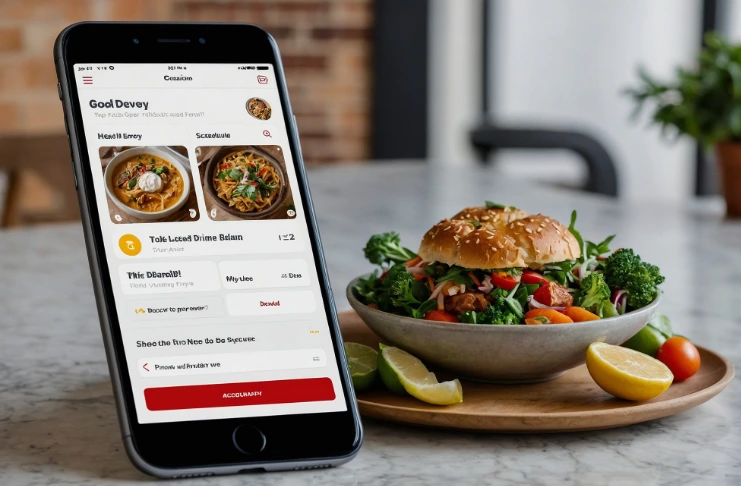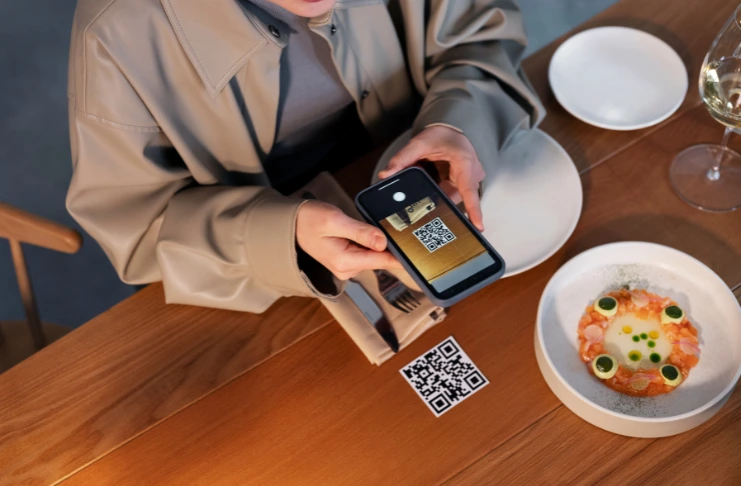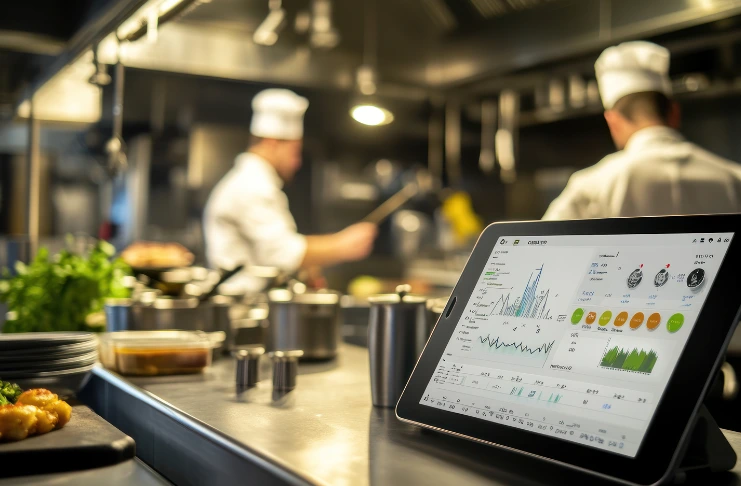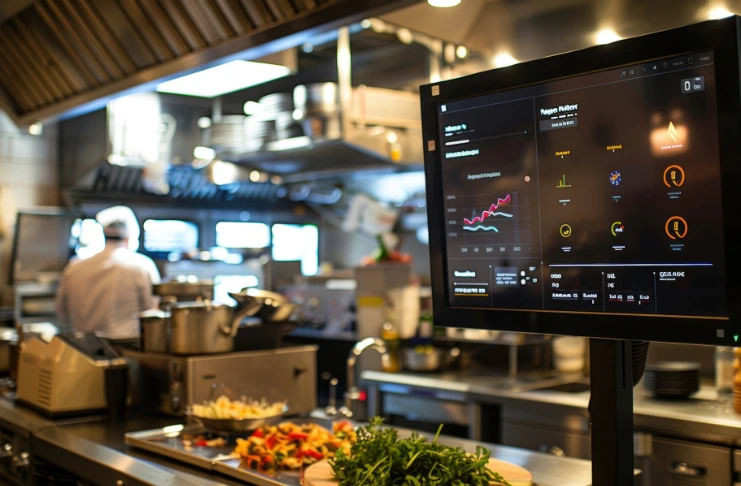
Table of Contents
ToggleFor restaurant owners, the pressure to manage daily operations, drive online sales, attract more customers, and retain existing ones has never been higher. In the digital era, restaurant apps aren’t just elements; they’ve become essential tools. Whether it’s a branded restaurant app for loyal guests, a mobile app for effortless ordering, or software that helps you save time and reduce costly third-party fees, the right tools can fundamentally reshape your business.
In this guide, we’ll explore the best restaurant apps across key categories, highlight the 10 best apps for 2025, and help you choose the right tools to build a thriving business.
Why Restaurant Owners Need Apps
Technology is transforming how restaurants operate from the kitchen to the guest’s table. According to a recent report, 63% of full-service customers are comfortable placing orders through an app, 55% are comfortable paying via app, and 58% prefer order pickup when these digital options are available. Even more strikingly, 60% of all digital restaurant orders today are placed via mobile, and a whopping 70% of consumers prefer ordering from a custom app over a third-party service.
For restaurant owners, these stats highlight major benefits:
- Increase online sales by meeting customers where they are.
- Reduce reliance on third-party platforms, cutting out high fees and protecting your brand.
- Gain ownership of customer data, powering loyalty and promotions.
- Streamline order management, saving you time and avoiding operational errors.
- Capture more customers, especially those in the digitally savvy Gen Z and Millennial demographics.
Key Categories of Restaurant Apps
Let’s break down the essential types of restaurant apps every busy restaurant owner should consider:
- Point of Sale (POS) & Billing Apps – POS system centralize sales, menu syncing, and payments. They streamline order management, integrate dine-in and takeout workflows, and give restaurant owners real-time visibility into revenue.
- Inventory Management Apps – Track stock levels, reduce waste, and control costs. These apps help busy restaurant owners maintain profitability while ensuring that ingredients are available to deliver consistent customer satisfaction.
- Staff Scheduling & HR Apps – Scheduling apps optimize shifts, payroll, and communication. They save time for managers while boosting staff efficiency, reducing labor costs, and improving team morale in fast-paced environments.
- Online Ordering Systems & Delivery Apps – Enable direct customer orders via branded website or branded restaurant app, driving online sales and eliminating heavy third-party fees, while helping owners reach new customers seamlessly.
- Reservation & Table Management Apps – Manage waitlists, seating capacity, and reservations. These apps improve guest experience, maximize table turnover, and reduce lost business during peak dining hours.
- Customer Relationship Management (CRM) & Loyalty Apps – Build loyalty by tracking guest behavior, personalizing offers, and rewarding repeat visits. CRM apps help owners foster stronger relationships and encourage more customers to return.
- Accounting & Finance Apps – Automate expense tracking, revenue monitoring, and tax compliance. They simplify financial workflows, letting busy restaurant owners focus on growth instead of paperwork.
- Marketing & Social Media Apps – These apps schedule posts, run campaigns, and add photos of dishes. They expand reach, engage diners, and showcase the brand to attract more customers online.
- Analytics & Reporting Apps – Provide data-driven insights into sales, operations, and customer trends. Reporting tools enable restaurant owners to make informed decisions, enhance efficiency, and drive growth.
INDUSTRY INSIGHT
The global restaurant management software market is experiencing rapid growth, driven by the increasing digital adoption among restaurant owners.
Valued at USD 5.79 billion in 2024, the market is projected to reach USD 14.70 billion by 2030, reflecting a robust compound annual growth rate (CAGR) of 17.4% from 2025 to 2030.
This surge underscores the increasing demand for integrated solutions that enable busy restaurant owners to streamline operations, boost online sales, and minimize third-party fees. From mobile apps and branded restaurant platforms to advanced order management and analytics tools, technology is reshaping how restaurants operate and engage with more customers. As the industry evolves, investing in smart software is no longer optional; it’s essential.
Best Apps for Restaurant Owners in 2025
Below are 10 of the best restaurant apps for 2025, each offering a unique edge for busy restaurant owners seeking to drive efficiency, boost online sales, and save time.
1. Restroworks (All-In-One Restaurant Management Platform)

An integrated solution combining POS, kiosk (RestroGO), QR ordering (RestroSCAN), online ordering (RestroWEB), mobile app (RestroAPP), plus inventory, recipe management, anti‑theft, and analytics. It’s a complete ecosystem, helping restaurant owners centralize operations and deliver seamless service across channels, not just order management, but also delivering a mobile app experience with a familiar brand feel.
Pros
- Unified platform reduces reliance on multiple third-party apps.
- Customizable branded restaurant app and website increase direct online sales while avoiding high third-party fees.
- Real-time order management, analytics, and inventory insights help owners save time.
- Hardware-agnostic design ensures flexibility for different restaurant formats.
Cons
- It can feel overwhelming for smaller operators without tech support.
2. Restaurant365 (Integrated Accounting, Inventory & Scheduling)
This back-office powerhouse seamlessly integrates accounting, inventory control, and labor management into a single interface. For restaurant owners swamped with bookkeeping and scheduling chaos, this app brings efficiency, cost control, and fast insights.
Pros
- Automates accounting and tax compliance, reducing manual errors.
- Real-time inventory tracking helps minimize waste and manage food costs.
- Scheduling tools streamline labor planning and payroll integration.
- Cloud-based design allows access anytime, saving time for busy restaurant owners.
Cons
- Pricing may feel high for smaller restaurants.
- Requires initial setup and training for effective use.
- Advanced features may be overwhelming for non-technical users.
3. OpenTable for Restaurants (Reservations & Guest Management)
A staple for réservation management, waitlists, and guest engagement. If you’re aiming to provide a standout reservation experience and drive foot traffic, this app delivers.
Pros
- Easy-to-use platform trusted by millions of diners.
- Increases visibility by listing your restaurant to a wide user base.
- Offers tools for table optimization, waitlist management, and guest data collection.
- Helps restaurant owners save time by automating reservations and confirmations.
Cons
- Subscription and commission fees may feel high for smaller operators.
- Heavy reliance on OpenTable’s network can limit direct customer relationships.
4. Owner.com (Commission-Free Online Ordering & CRM)

Owner.com is a commission-free platform that empowers restaurant owners to manage their online sales effectively. It offers a branded website and ordering system that helps reduce reliance on costly third-party apps.
Pros
- Eliminates hefty third-party fees, increasing profit margins.
- Provides a branded restaurant app and website for stronger customer relationships.
- Includes CRM tools to manage customer data and loyalty programs.
- Boosts online sales with upselling features and direct ordering.
Cons
- Limited to restaurants focused heavily on digital ordering.
- Initial setup and marketing efforts are required to attract customers.
5. Tock (Reservation & Event Management)
Perfect for restaurants offering tasting menus, ticketed events, or fine‑dining experiences. Tock excels at managing pre-paid reservations and special events with precision.
Pros
- Allows prepaid reservations, reducing no-shows and improving cash flow.
- Ideal for managing events, wine tastings, or tasting menus.
- Provides data insights into guest preferences.
- Helps restaurant owners save time by automating confirmations and deposits.
Cons
- Subscription pricing can be steep for smaller restaurants.
- Better suited to upscale or experiential dining models, limiting mass appeal.
6. Connecteam (Staff Communication & HR Solutions)
This tool consolidates staff messaging, shift planning, onboarding, and HR into a single platform. Ideal for multi‑location or busy restaurant operations looking to save time on staff coordination.
Pros
- Centralizes employee communication with built-in chat and updates.
- Simplifies employee scheduling, attendance tracking, and shift swaps.
- Offers training modules and onboarding tools for new hires.
- Mobile-friendly, making it easy for managers and staff to stay connected anywhere.
Cons
- Feature-rich platform may feel complex for small restaurants.
- Advanced HR tools require higher-tier plans.
- Initial setup can be time-consuming.
7. Eat App (Reservations, CRM & AI Automation)

A cloud-based reservation and table management platform enhanced with CRM and AI. It analyzes guest preferences, automates guest outreach, and builds a digital guestbook, enabling restaurant owners to build loyalty and personalize experiences at scale.
Pros
- Simplifies reservation and table management with real-time updates.
- Built-in CRM collects guest data for personalized experiences.
- AI automation improves marketing campaigns and reduces no-shows.
- Helps busy restaurant owners save time and attract more customers.
Cons
- More suitable for mid-to-large restaurants than very small outlets.
- Requires training for staff to maximize CRM and AI features.
8. 7shifts (Team Scheduling & Labor Management)
7shifts is a labor management app built for restaurants, helping busy restaurant owners simplify scheduling, track labor costs, and improve team communication. It’s widely used in quick-service and full-service settings.
Pros
- Easy shift scheduling and automated notifications.
- Tracks labor costs in real time, helping manage budgets.
- Integrates with POS system and payroll for seamless order management.
- Saves time for managers and reduces scheduling conflicts.
Cons
- Advanced features may require premium plans.
- Small business may find it more than they need.
- Some staff training is required for adoption.
9. Hootsuite (Social Media Management for Restaurants)
Hootsuite is one of the most popular social media management apps, making it easier for restaurant owners to manage multiple platforms in one place. From scheduling posts to monitoring reviews, it helps busy restaurant owners maintain a consistent online presence and engage with more customers.
Pros
- Centralizes Facebook, Instagram, Twitter/X, and more on one dashboard.
- Lets restaurants schedule posts, add photos, and plan campaigns in advance.
- Provides analytics to monitor engagement and track online sales impact.
- Saves time by automating repetitive marketing tasks.
Cons
- Advanced analytics and team features come with higher pricing.
- Learning curve for first-time users.
- Best suited for restaurants investing heavily in digital marketing.
10. Evernote (Organization & Note-Taking for Owners)
This is a versatile organization and note-taking app that helps busy restaurant owners keep track of ideas, vendor details, meeting notes, and operational checklists. It centralizes information, ensuring that nothing gets overlooked in a fast-moving business.
Pros
- Organizes notes, lists, and images in one searchable hub.
- Syncs across devices, ensuring access for on-the-go owners.
- Lets users add photos, scanned receipts, or contracts directly.
- Helps owners save time by replacing scattered notebooks and files.
Cons
- Free version has limited storage and device sync.
- Some features (task management, integrations) are locked behind premium tiers.
- Can feel excessive for owners who prefer simpler, lightweight note apps.
How to Choose the Right Apps for Your Restaurant

With so many restaurant apps available, the challenge isn’t finding them—it’s knowing which ones are right for your business. A busy restaurant owner must approach this strategically, focusing on solving immediate problems first and then scaling gradually. The wrong choice can mean wasted money, poor staff adoption, or apps that don’t integrate with your existing systems. Here’s a practical framework to guide your decision:
- Identify your priority pain point:
Start by asking: what’s the biggest challenge today? Is it staff scheduling, boosting online sales, or streamlining order management? Choose apps that directly address these pressing issues. - Consider your budget and scalability:
Consider how much you’re willing to invest now and whether the app can grow with you. Modular solutions let you add features over time, while complere systems bundle everything together. - Check integration capabilities:
Your POS, CRM, inventory system, and branded website should communicate seamlessly. Poor integration creates silos, forces manual work, and wastes valuable time. - Evaluate ease of use and training:
The best tools save time, not create more work. Look for simple dashboards, intuitive features, and strong onboarding support to avoid staff frustration. - Look at support, onboarding, and updates:
Apps evolve quickly, so reliable customer support and regular updates are critical. This is especially important for teams that aren’t very tech-savvy. - Test for outcomes:
Pilot an app and track results. Does a commission-free ordering system reduce third party fees? Does a loyalty program bring back more customers?
Start lean: pick one or two apps that solve a major issue, pilot them, measure results, and expand your toolkit as you gain confidence.
Conclusion
For modern restaurant owners, the right mix of restaurant apps can turn chaos into clarity. A smart mobile app or branded restaurant app can drive online sales, reduce reliance on aggregators and third-party fees, and help you save time. Operations platforms unify workflows, scheduling tools keep labor lean, and social media tools help your restaurant be more inviting online. By choosing tools strategically, you can simplify management, delight your customers, and unlock new growth opportunities.
Frequently Asked Questions
The ownership structure, which can be a sole proprietorship, partnership, or corporation, depends on tax, liability, and growth goals. Many independent restaurant owners start as sole proprietors but shift to an LLC or corporation for legal protection and scalability.
If you’re dealing with rising aggregator commissions and want a custom-branded website + app to drive direct sales, Owner.com can quickly pay for itself by eliminating third‑party fees and capturing essential customer data. As noted, direct ordering can increase the average order value by up to 20% and eliminate commissions ranging from 15% to 30%.
Join local industry associations, attend trade events, participate in online forums, and engage in community social media groups. Platforms like LinkedIn or regional food business networks are great places to share insights and build relationships.
Income varies widely based on concept, location, and scale. Profit margins in the restaurant industry typically hover between 3% and 5%. Digital tools that reduce costs, increase online sales, or drive repeat visits through loyalty programs can significantly improve overall earnings.








